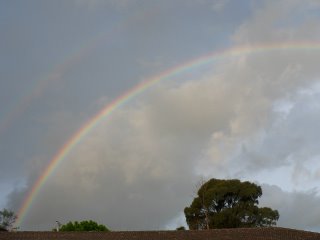Saturday, November 19, 2005
More on Australia

While we were in Australia, we visited the Jewish center in Melbourne and took a tour of one of the local synagogues, which is right next door to the center (pictured here). As in India, the history of Jewish emigration is fascinating, and the center/museum is very well done. The first Jewish person known to have come to Australia was Esther Abrahams, a pregnant 16 year old from London who was on the so-called "First Fleet" of convicts to Sydney---Britain's response to prison overcrowding. Esther's crime was stealing 24 yards of black lace from a London dry goods store. Fortunately for her, she met a lieutenant on the ship who became her life's love and she bore him 7 other children. Other Jews also came on subsequent ships, primarily petty thieves---there were no murderers among the Jewish convicts. Another wave of emigration occurred in the 1850s when gold was discovered in Ballarat, Victoria and Jews joined thousands from Europe, California, and other parts of Australia in flocking to the goldfields --though turned to shopkeeping and trading, especially after the first rush. Like the U.S., Australia was also a refuge from pogroms in the late 1880's and Nazi Germany, and more recently from Russia. There has also a steady stream of emigres from Israel.
On our way back from Adelaide, we stopped at Ballarat, which was the site of the great gold rush mentioned above, occurring just a decade after gold was discovered in California. One highlight from this stop was the sound and light show staged nightly, called Blood on the Southern Cross, which depicts the story of miner protests of British oppression and a massacre that occurred when the British raided the Eureka stockade in 1854. Despite having no actors, it is extremely realistic and blood curdling.
The next day we took a tour of the mine under a Greenfield village- type reproduction of the 1850's gold rush town, called Sovereign Hill. You could experience first hand the conditions of the miners---from watching the tiny elevator that transported men up and down the mine shaft to a recreation of the dangerous blasting techniques used in the days before dynamite. The safest miners were the Cornish, who took care to reinforce the rock and used more conservative blasting techniques, but under any circumstances the work was dangerous and resulted in many lost lives.
On our last day in Ballarat we had a real treat--a complete rainbow, one of the few I can ever remember seeing. It occurred only for a few minutes after day long spring rain, but was beautiful while it lasted.



